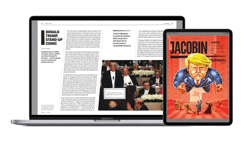
Bookazines, or SIPs (Special Interest Publications) as they are known in the US, have enjoyed buoyant sales over the past two years, and have attracted a record number of new titles into the market. The number of issues launched in the UK during Q4 2021 totalled over 170 releases per month, up 25% on pre-covid levels. The pace of growth has been even faster in the US, where SIP sales generated $500m RSV in 2021, accounting for around 40% of the total category value, and becoming the dominant sector of the magazine newsstand.
Bookazines were once the exclusive domain of premium priced specialist titles, mostly covering tech and history, but the category has since exploded to cover an ever wider variety of lifestyle sectors on the newsstand. The covid pandemic saw a rapid rise in readers searching out titles that catered to their newfound hobbies and interests in home workouts, nutrition & health, mindfulness & self improvement and music & entertainment, as they spent more time at home, and looked for ways of reducing screen time.
Sales of bookazines and SIPs have continued to rebound strongly, mirroring the recent growth in non-fiction books and recovering well ahead of the majority of magazine sectors since the peak of the covid impact. The challenge at retail is in unlocking wider distribution and display to capitalise on the sales opportunities that these titles represent.
There are three key areas that publishers should pay attention to when considering their bookazine development strategy:
- Be guided by the data: If there is one lesson to be learned from the past two years, it is that both reading habits and purchasing patterns are constantly changing. Gaining a good understanding of consumer trend data enables publishers to make informed decisions about launch timing and supports the ability to pivot into new areas. Remaining data driven also reduces the likelihood of launching loss making titles. Non-magazine datasets play an important role in providing a window into what’s happening in the wider world: Amazon rankings, Netflix and book sales charts can all help to support new title development and point towards opportunities on the newsstand. The best-selling releases of 2021 were from publishers that were able to read the market effectively and produce great quality content that aligned with the latest trends.
- Explore export: Having minimal advertising pages, higher cover prices and premium content, bookazines are highly marketable overseas and attractive to both local consumers and retailers alike. Many regular frequency magazine titles in international markets have never reappeared on the newsstand post covid, and bookazines can often fill the gaps that these titles have left behind. English speaking markets, in particular the US, Australia and Scandinavia, offer enormous headroom for growth. Publishers should take the time to understand the retail landscape and routes to market, and partner with a distributor that has the ability and relationships to secure local retailer acceptance.
- Diversify your channel mix: Grocery channels in the UK and around the world benefited from increased shopper footfall during covid, at a time when many traditional news retailers were forced to close during lockdown. Increasing your presence within grocery channels guards against future risk of further lockdowns, and, importantly, gets your (perfectly timed, trend led) bookazine into the stores that can deliver high impulse sales. Bookazine readers have basket spends of up to 50% higher than the average shopper, so there are clear benefits to grocery retailers widening their bookazine offer in-store. Placement position in-store is vital too, and with effective display in high footfall areas of the store, bookazines have successfully attracted non-magazine shoppers into the category for the first time.
Despite the long term challenges on the newsstand for magazines, SIPs and bookazines offer real opportunity to unlock new sales at retail. The past two years have demonstrated that demand for high quality editorial remains very strong. The challenge for publishers is in producing content that can surprise and delight consumers in the UK and around the world, and in securing display visibility at retail that is capable of delivering impulse sales.

About us
With more than 30 years of experience, Marketforce leads the way in global sales, marketing and distribution for a wide range of publishing and media businesses. Owned by Future PLC, we are backed by one of Europe’s largest and fastest-growing media companies.
We are the #1 independent publisher newsstand distributor. Distribution is our core service, but our focus is also on helping publishers build their businesses through adding value. We aid product development, help determine optimal pricing and deliver customer marketing for brands that grows sales. If you would like to hear why more publishers are choosing Marketforce, call us for a chat about getting the distribution you need.
Email: hello@marketforce.co.uk
Tel: 0330 390 7498










